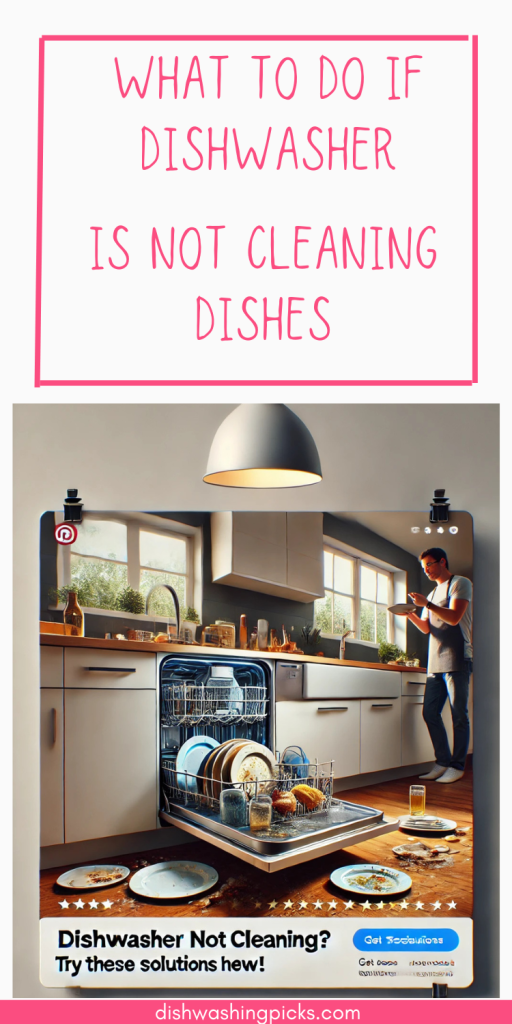We’ve all been there: You load up your dishwasher, hit start, and cross your fingers that everything comes out spotless. But then… uh-oh, your dishes still look dirty. Frustrating, right? You might be wondering, “What the heck is going on?” Don’t worry; you’re not alone. Let’s walk through what you can do when your dishwasher isn’t cleaning your dishes properly—because honestly, it’s not just about the dirty dishes; it’s about avoiding a mini meltdown!
Check the Spray Arms
So, let’s kick things off with the spray arms. They’re the little guys inside the dishwasher that do all the heavy lifting when it comes to spraying water over your dishes. If your spray arms are clogged or blocked, guess what? Your dishes are probably going to stay dirty.
You might be asking, “How do I check them?” It’s simple! Pop them off and check for any debris, like food particles, mineral buildup, or grease. Give them a good rinse under warm water, and if you’re feeling fancy, use a toothpick to clear out any stubborn gunk.
You might even notice that the spray arms are a little out of alignment, which can happen if the dishwasher gets jostled. Just adjust them to ensure they spin freely. Easy fix, right?
Clean the Filter
Now, onto the filter. If you haven’t cleaned your dishwasher filter in a while (no judgment, it happens!), it could be full of stuff that’s stopping your machine from working its magic. When the filter gets clogged, dirty water has a tough time draining, and your dishes end up soaked in soap and food bits.
Here’s what you need to do: Locate the filter at the bottom of your dishwasher (usually near the spray arms). Depending on your model, it may twist or lift right out. Rinse it under warm water, and scrub it with a brush if necessary. You’d be amazed at how much grime can get stuck in there!
Use the Right Detergent
Okay, so this might seem like a no-brainer, but hear me out. The kind of detergent you use really matters. Not all dishwashing detergents are created equal. Some might not be strong enough to handle tough grease or grime, while others might leave behind residue that leaves your dishes looking spotty or slimy.
So, what should you do? First, make sure you’re using a detergent that’s compatible with your dishwasher. If your machine requires a specific type (like powder, gel, or pods), stick to it. Also, don’t overload your detergent dispenser! Too much detergent can cause a soapy buildup, while too little won’t get your dishes clean enough. Finding that sweet spot is key.
Ensure Proper Loading
Alright, let’s talk about the way you load your dishwasher. It’s tempting to just throw everything in there and hope for the best, but believe it or not, there’s a method to the madness! If you cram everything in too tight or face things the wrong way, your dishes won’t get the spray they need.
Imagine this: You’ve got plates stacked up so high that the spray arms can’t move. Now, all that water is getting blocked, and your dishes are left dirty. Keep your plates facing down so the water can reach them, and give pots and pans some space so they don’t block the spray arms. It’s all about giving your dishwasher room to work its magic!
Check the Water Temperature
Do you know the temperature of your dishwasher’s water? Probably not, right? But the truth is, hot water is crucial for breaking down food and grease on your dishes. If the water’s too cold, your dishwasher just won’t do its job properly.
The ideal temperature for dishwashing is about 120°F (49°C). If your water heater is set lower than that, your dishwasher might struggle. You can check the water temperature by running hot water from your kitchen sink and using a thermometer to measure it. If it’s too low, you may need to adjust your water heater.
Conclusion
And there you have it! A few simple checks and tweaks to get your dishwasher back on track. From cleaning out the filter to using the right detergent and making sure your dishes are properly loaded, sometimes all it takes is a little attention to detail.
If none of these steps solve the problem, it might be time to call in a professional, but most of the time, you can fix it yourself. So, next time you open your dishwasher door and see a pile of dirty dishes staring back at you, just remember: it’s fixable!

